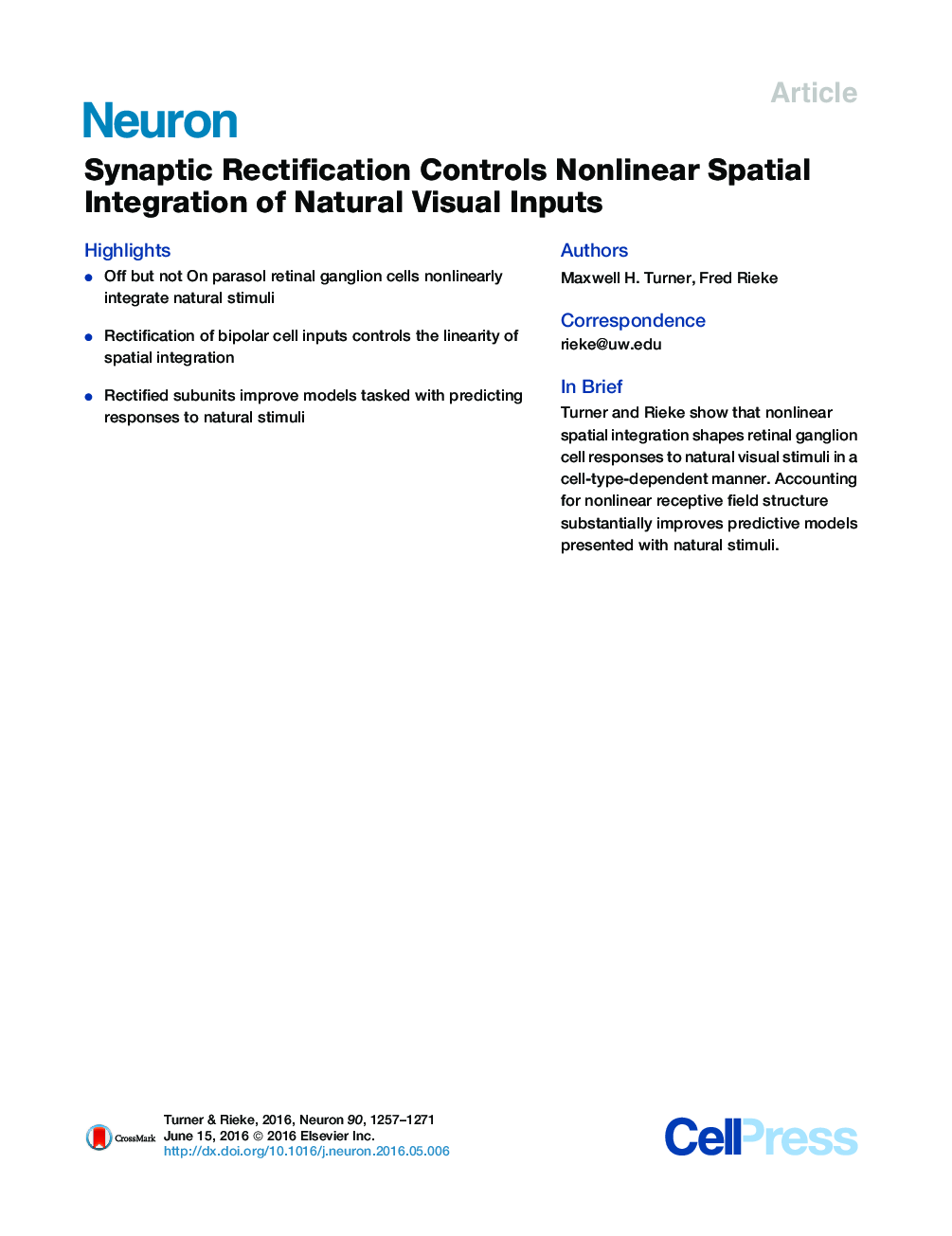| Article ID | Journal | Published Year | Pages | File Type |
|---|---|---|---|---|
| 4320686 | Neuron | 2016 | 15 Pages |
•Off but not On parasol retinal ganglion cells nonlinearly integrate natural stimuli•Rectification of bipolar cell inputs controls the linearity of spatial integration•Rectified subunits improve models tasked with predicting responses to natural stimuli
SummaryA central goal in the study of any sensory system is to predict neural responses to complex inputs, especially those encountered during natural stimulation. Nowhere is the transformation from stimulus to response better understood than the vertebrate retina. Nevertheless, descriptions of retinal computation are largely based on stimulation using artificial visual stimuli, and it is unclear how these descriptions map onto the encoding of natural stimuli. We demonstrate that nonlinear spatial integration, a common feature of retinal ganglion cell (RGC) processing, shapes neural responses to natural visual stimuli in primate Off parasol RGCs, whereas On parasol RGCs exhibit surprisingly linear spatial integration. Despite this asymmetry, both cell types show strong nonlinear integration when presented with artificial stimuli. We show that nonlinear integration of natural stimuli is a consequence of rectified excitatory synaptic input and that accounting for nonlinear spatial integration substantially improves models that predict RGC responses to natural images.
